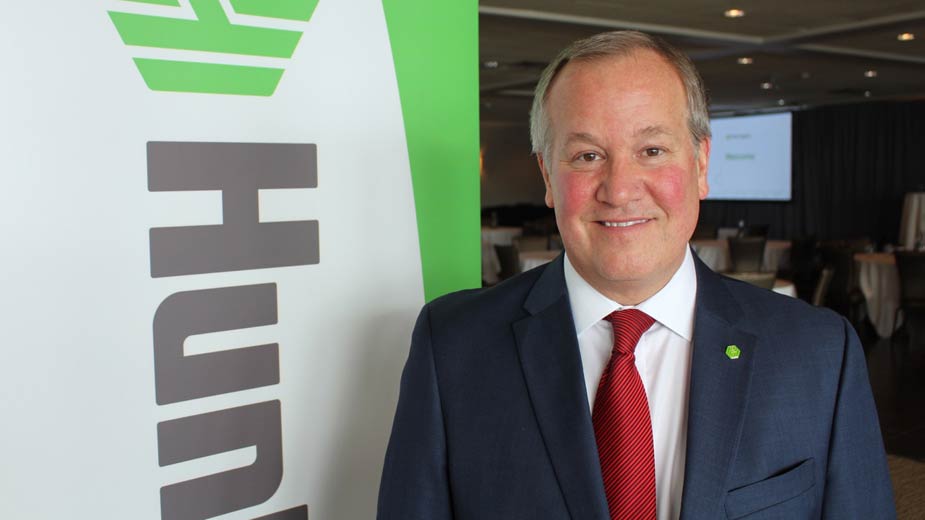Economic Outlook Is Stable for Mahoning Valley
POLAND, Ohio – Economic growth in the Mahoning Valley should remain stable this year but “could heat up again next year,” the chief investment officer of Huntington Private Bank, John Augustine, said Wednesday.
Augustine, who oversees the $17 billion in assets the bank manages, addressed some of Huntington National Bank’s best customers here, small-business owners and nonprofit officials, at the Lake Club in Springfield Township.
At $21.42 billion, The Mahoning Valley economy is growing 1.66% year over year, Augustine said, below that of the state economy, which is $630 billion and is growing at 1.77%, and national economy, $18 trillion, growing at 1.90%.
However, the median price of a house here, $87,600, has returned to its pre-Great Recession level and median family income is back as well at $53,900.
Unemployment has fallen to 5.5% and 224,200 are employed today, according to Huntington’s Youngstown Metropolitan Statistical Area economic focus.
Where nonfarm employment in the three largest cities in Ohio — Cincinnati, Cleveland and Columbus – has trended upward since the end of the Great Recession, it has remained basically flat in the five next-largest cities: Dayton, Akron, Toledo, Youngstown and Canton.
The latest post-World War II expansion is in its 90th month and should continue at least through the end of 2018, Augustine said. The longest expansion is the 120 months between March 1991 and March 2001.
The recoveries since 2001, he noted, are longer but no longer in the 3% range but 1.5% to 2%. “Most of us grew up when recoveries achieved 3% growth,” he said. Despite President Donald Trump’s campaign promises to achieve 3% to 4% growth, Augustine expressed skepticism at that figure.
And despite the setbacks Trump and his administration have suffered, Huntington’s chief investment officer offered “50% odds to get to their 3% or 4% goal,” based on the businessmen Trump has asked to serve in his cabinet, notably Secretary of Commerce Wilbur Ross.
During the campaign, The Washington Post reported on Sept. 15, that Trump promised 4% growth “We think it could be 5. It could even be 6,” The Post reported him saying.
Augustine offered “better than 50% odds to do 3% in 2018.”
Should the Trump Administration succeed in achieving a level of growth professional economists think unlikely, inflation would rise to 2% or higher in 2018, Augustine said. Huntington’s chief economist, George Mokrzan, predicts 2.1% growth this year and 2.5% growth in 2018 while private U.S. economists foresee 2.3% growth this year and next.
The Mahoning Valley economy is “moving in the right direction,” the chief investment officer said, because it is “rightsizing, utilizing and diversifying.”
The region has become a health-care hub, he said.
It is adjusting to its loss of population. The Valley is making good use of the resources it has, especially the energy sector, and is succeeding in diversifying its economy. The energy sector has suffered with the drop in the prices of oil and natural gas but they are rebounding and he foresees greater recovery this year and next.
Another reason for Augustine’s optimism, both here and nationally, is the release Tuesday of the Consumer Confidence Index (conducted by the Conference Board since 1967). Its latest monthly survey of 5,000 households hit its highest mark since December 2000, he noted, “and that makes businesses optimistic.”
Business profits continue to rise and industrial capacity, while trending downward the last two years, is 75.40%. Capacity sank to 66% at the end of the Great Recession and climbed to 79% in 2014. It stood at just over 80% just before the onset of the recession.
With business profits rising, owners can reinvest more in their enterprises, Augustine said, and expand capacity. He advised owners whose businesses are dependent on raw materials to lock in or extend their contracts with their suppliers. “Commodity prices are likely to go only up,” he said. “Some metals prices are up double-digits.”
The biggest challenge owners face, the banker said, is hiring blue-collars workers and other skilled tradesmen as soon as possible. The demand for these workers is such that if owners wait until they believe they can afford them, they either won’t find any or won’t find enough.
Pictured: John Augustine.
Copyright 2024 The Business Journal, Youngstown, Ohio.



